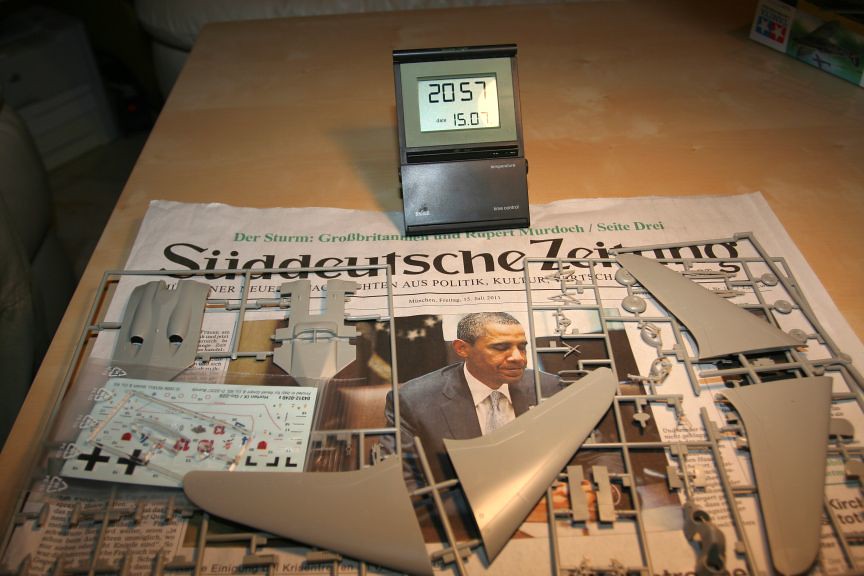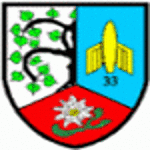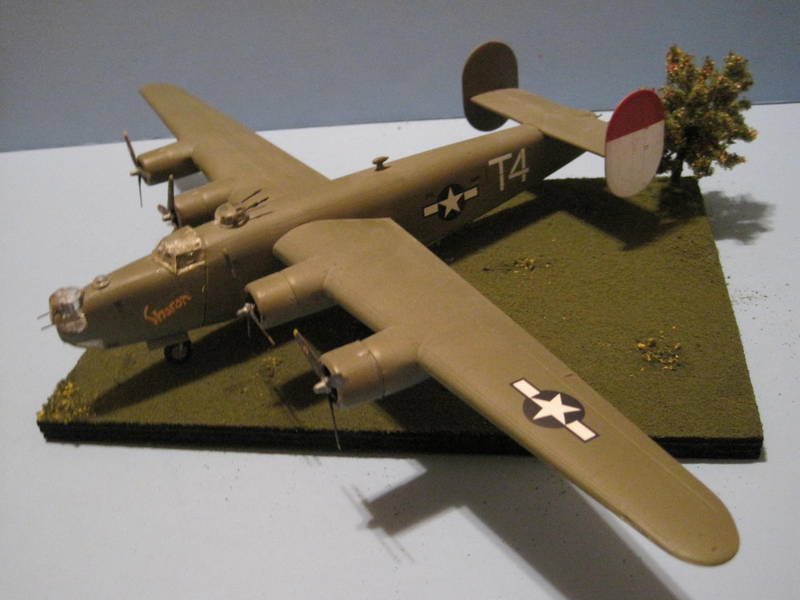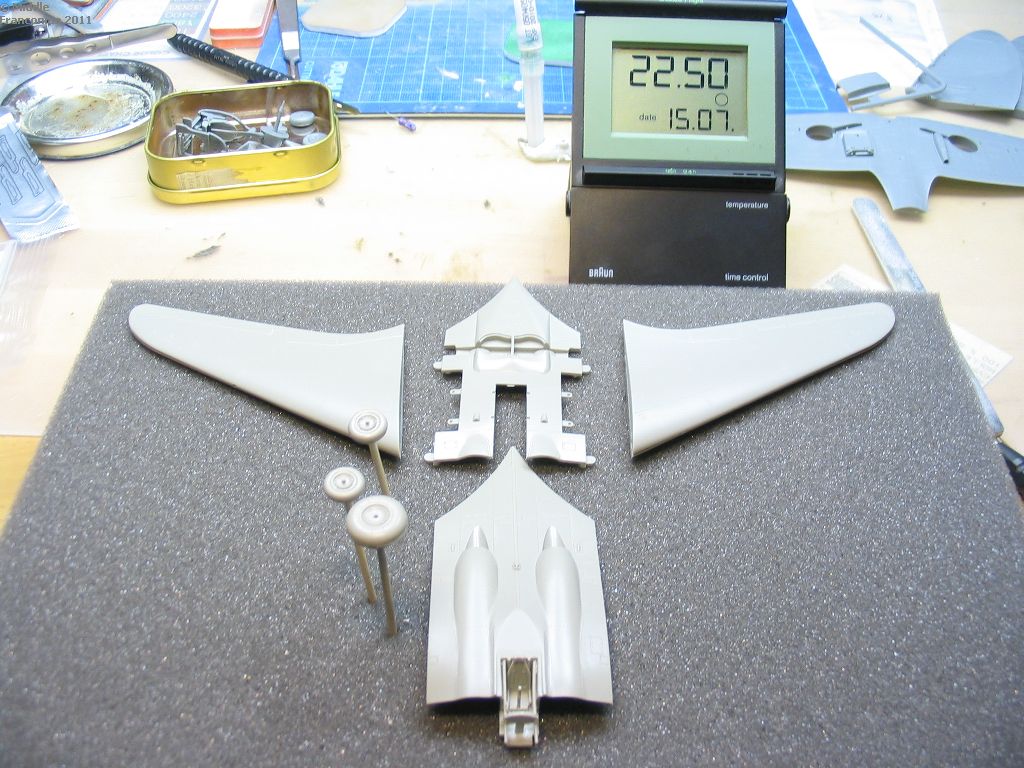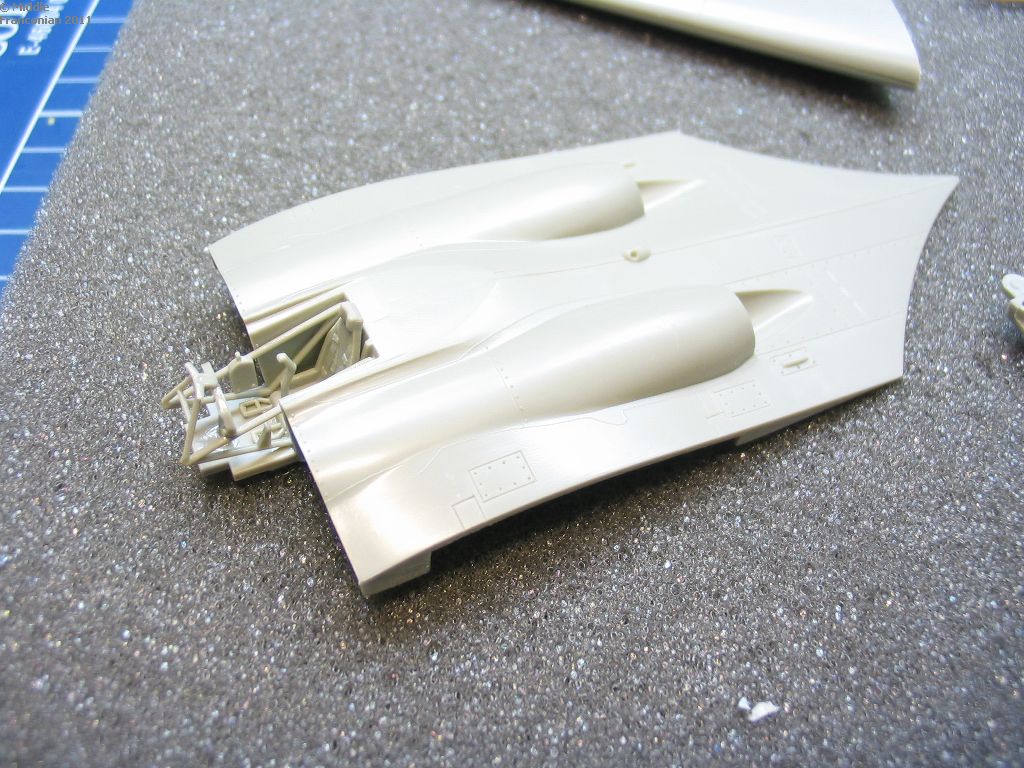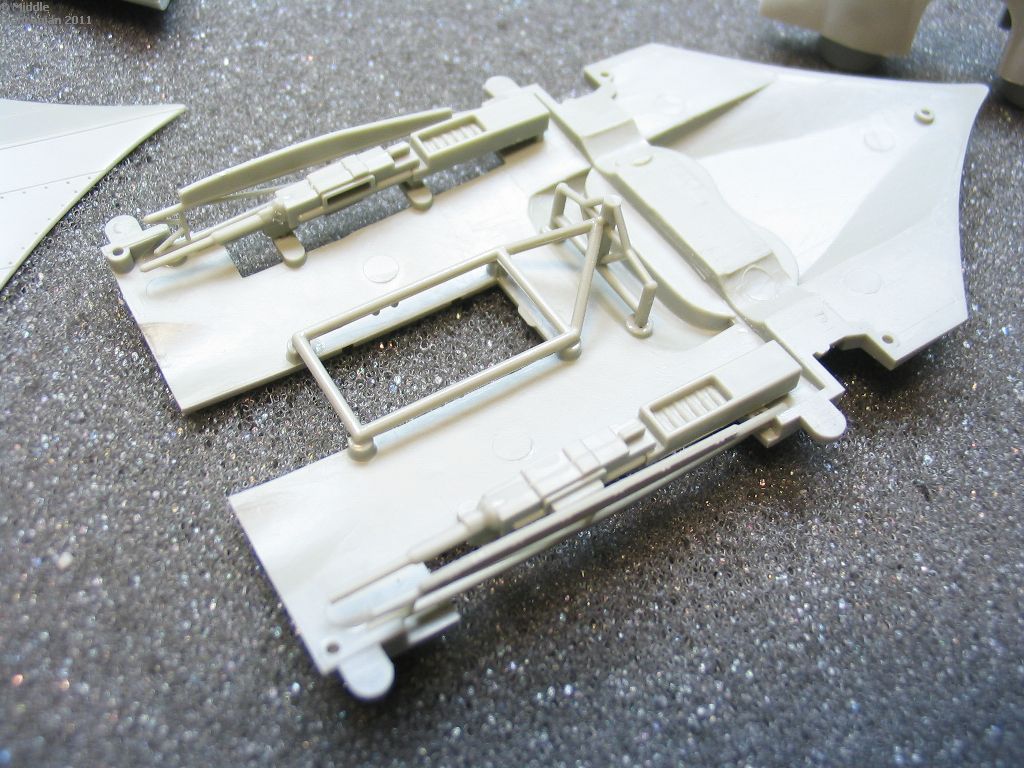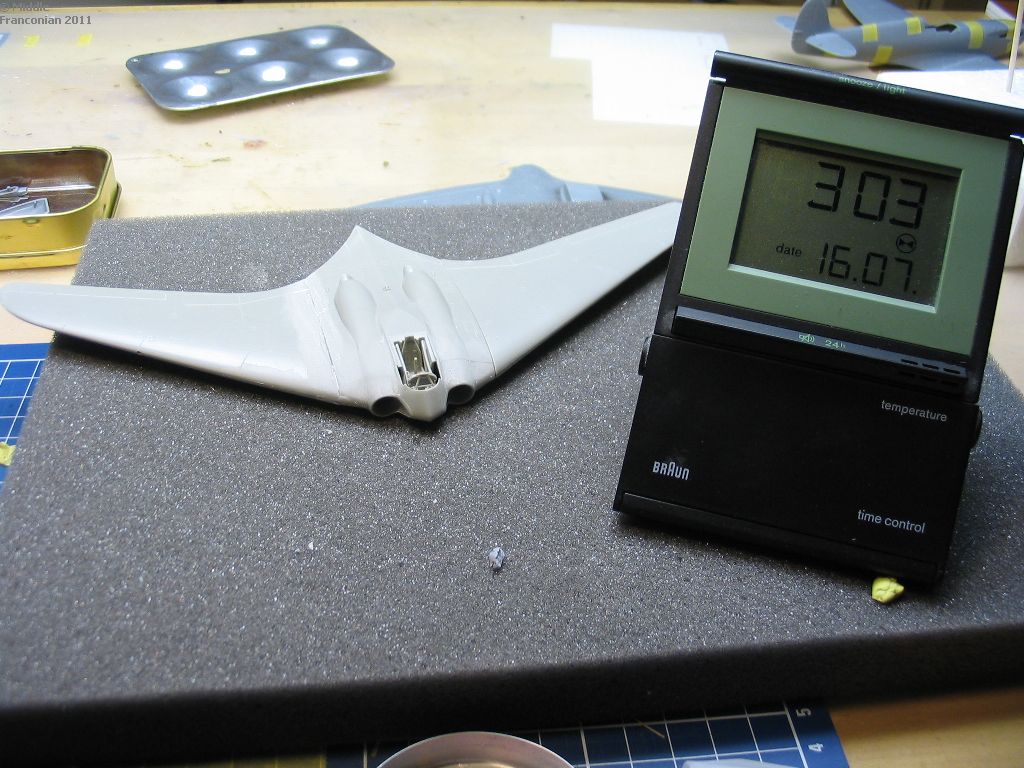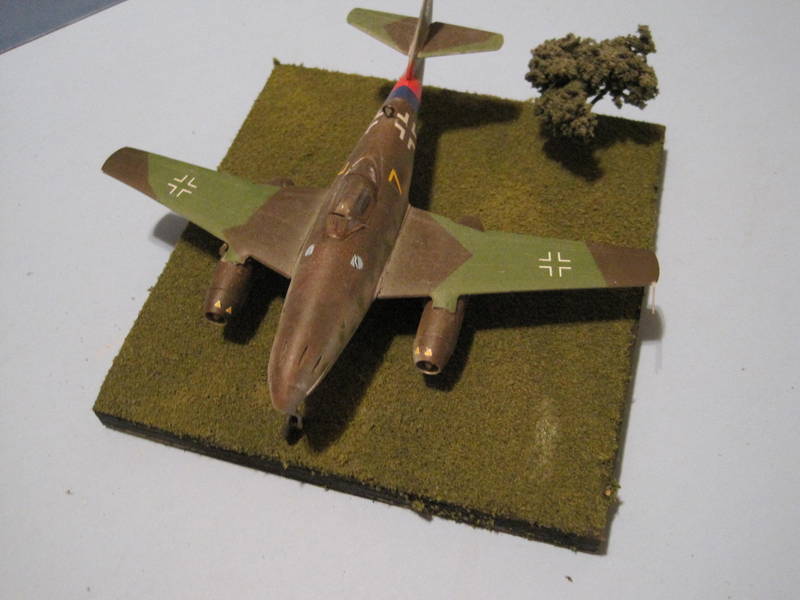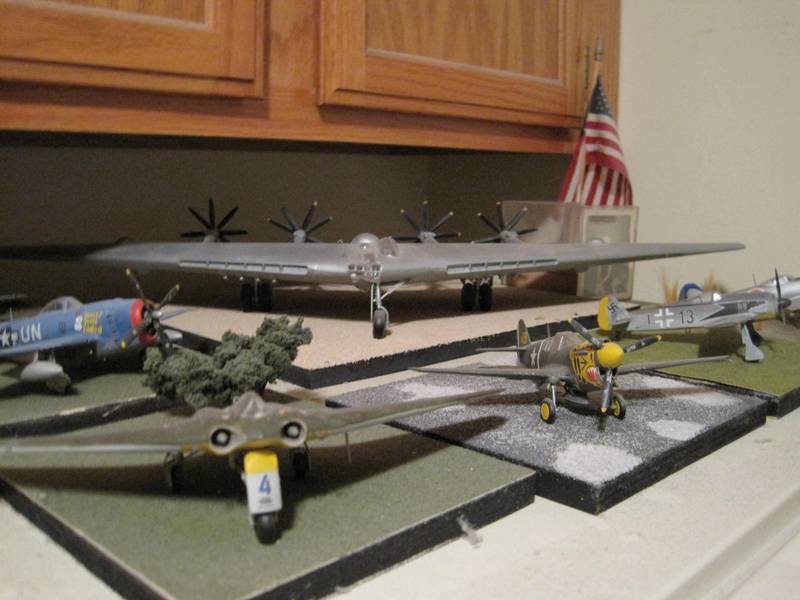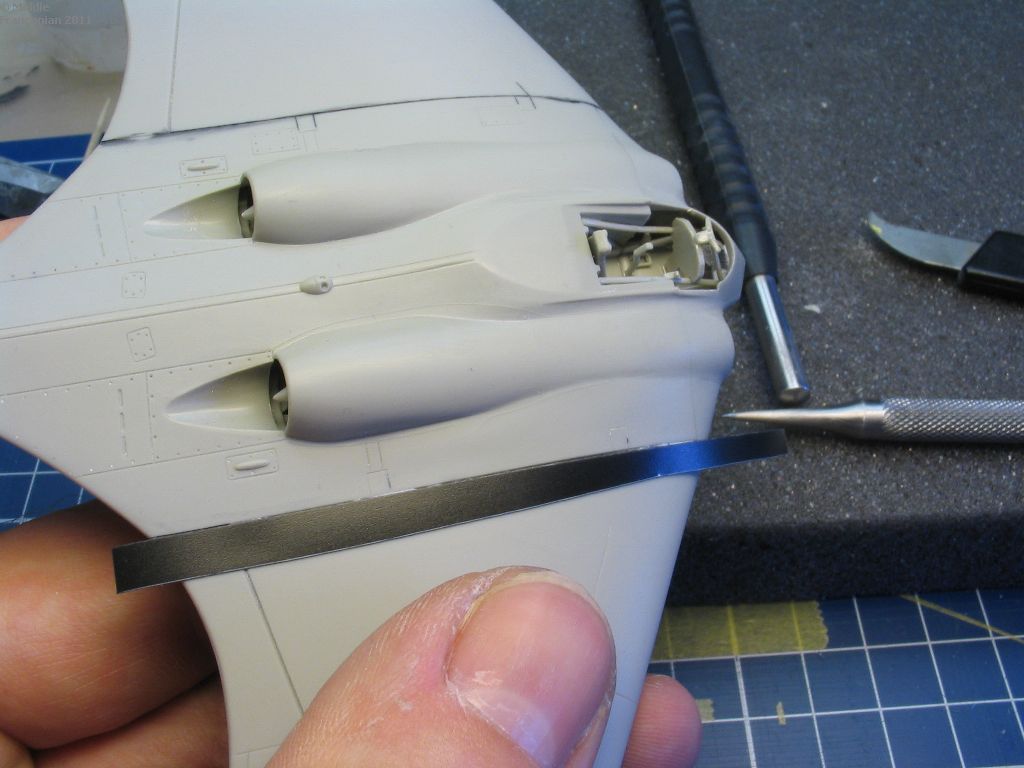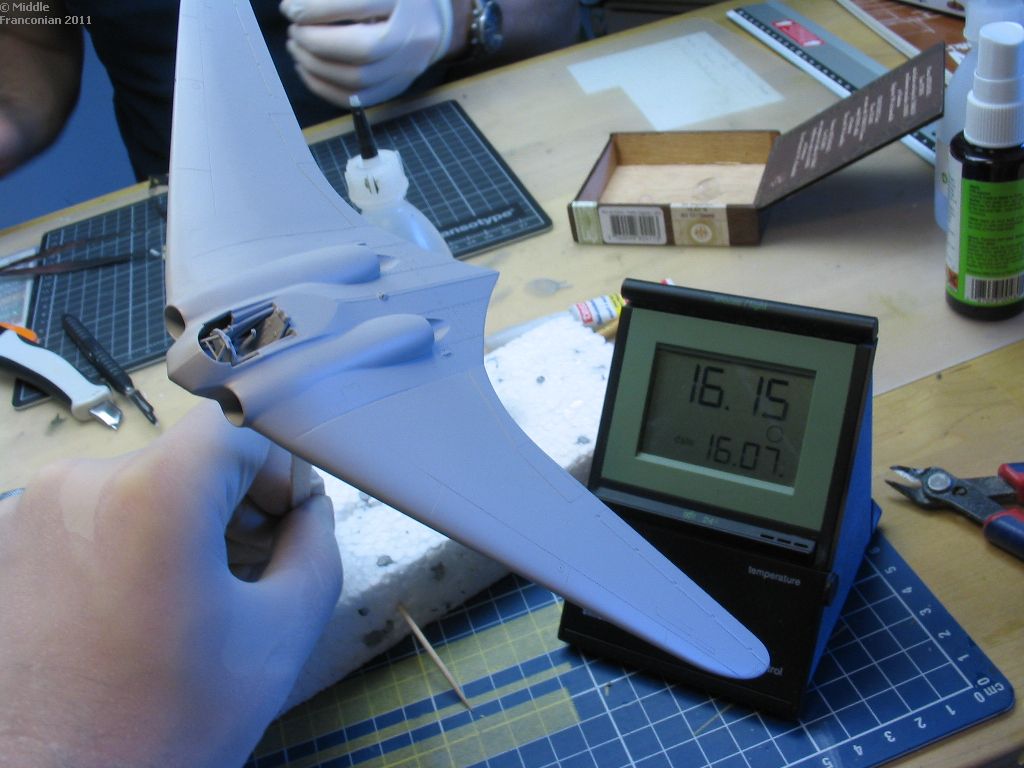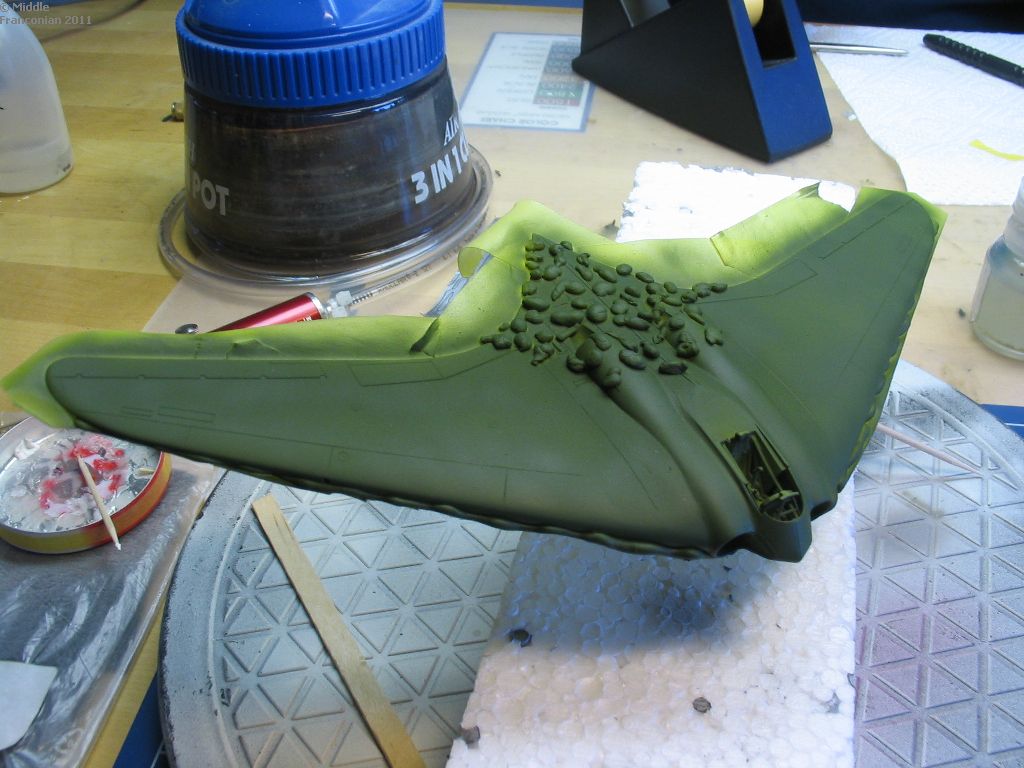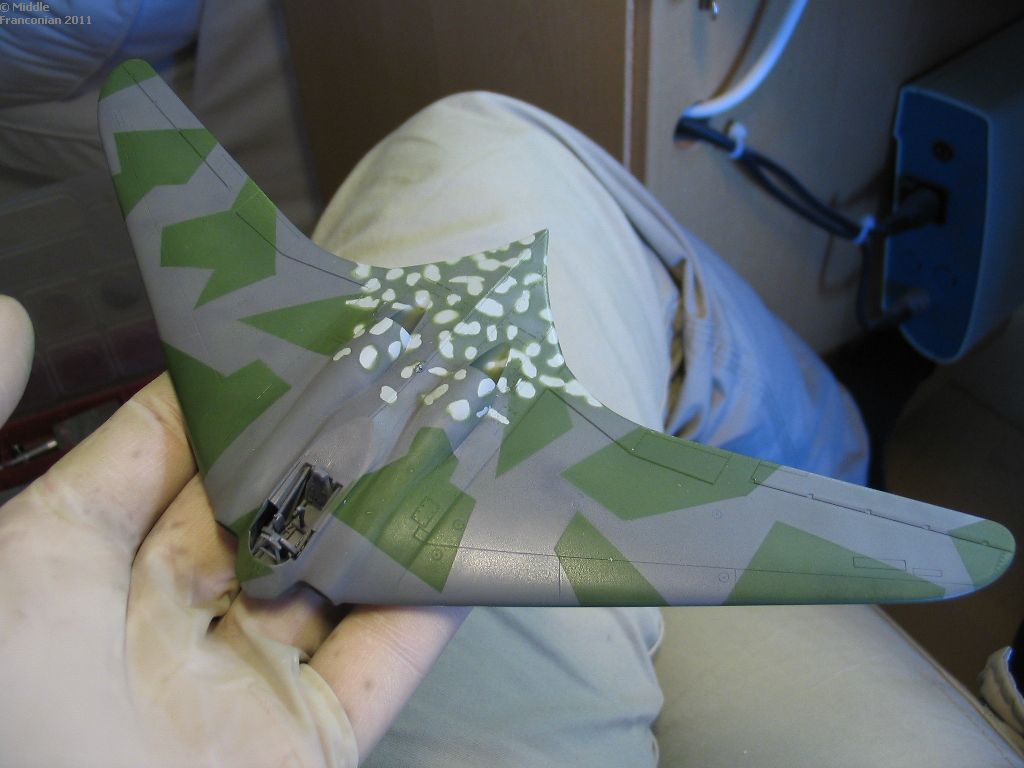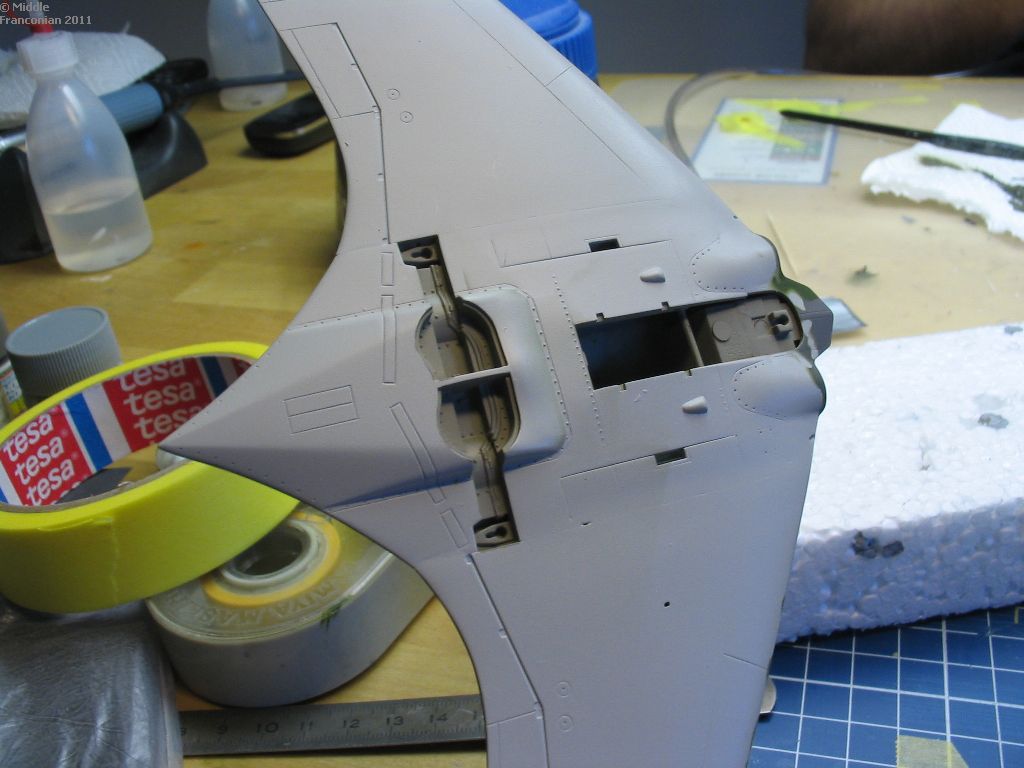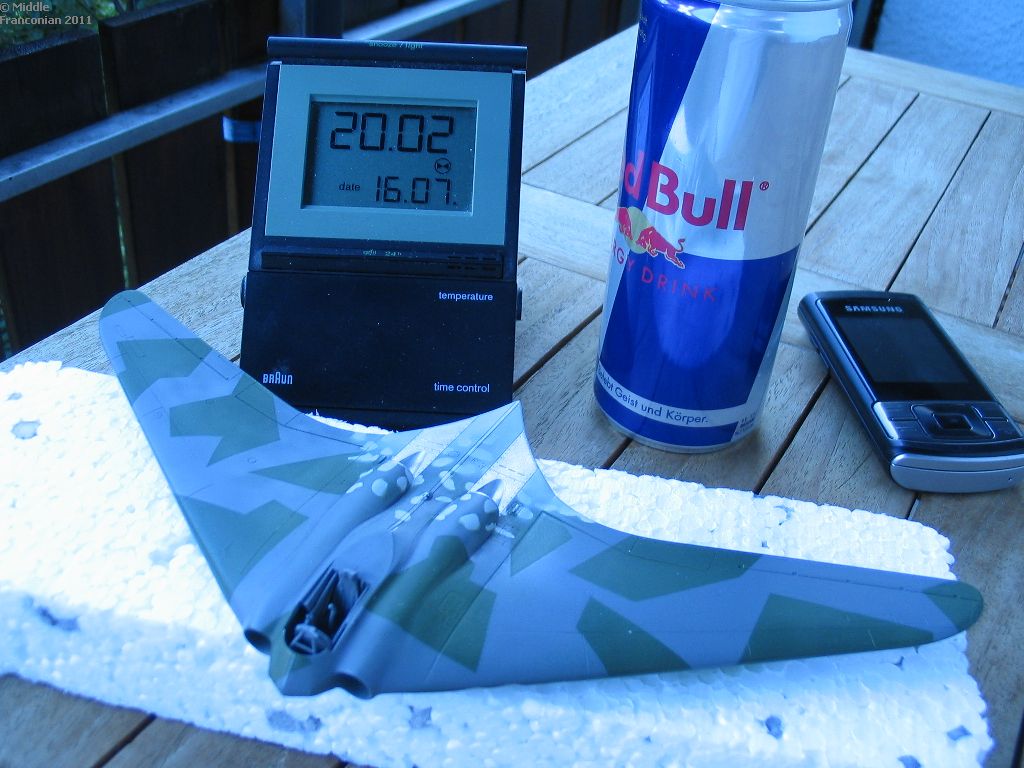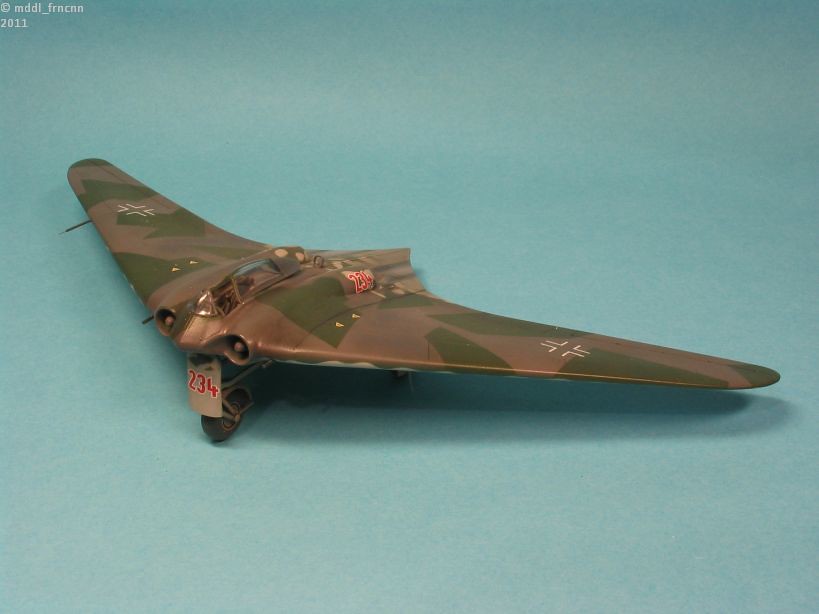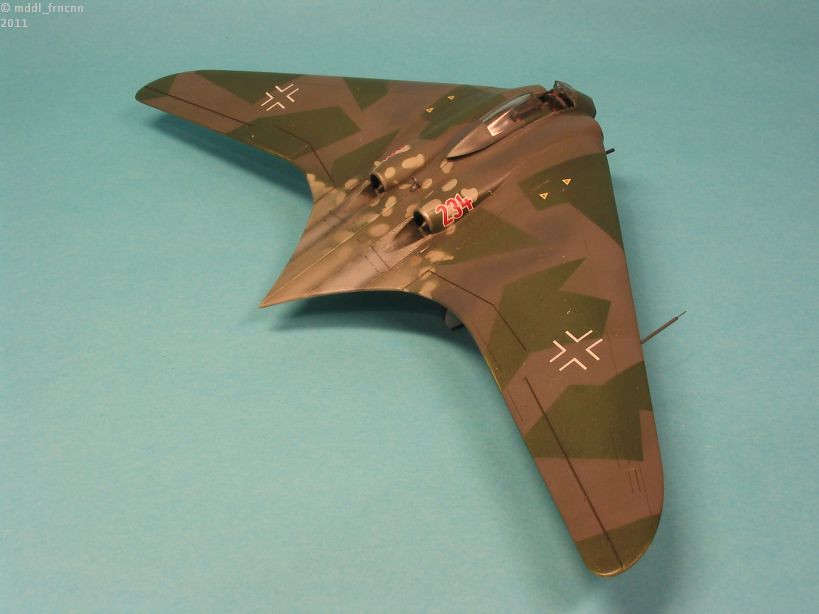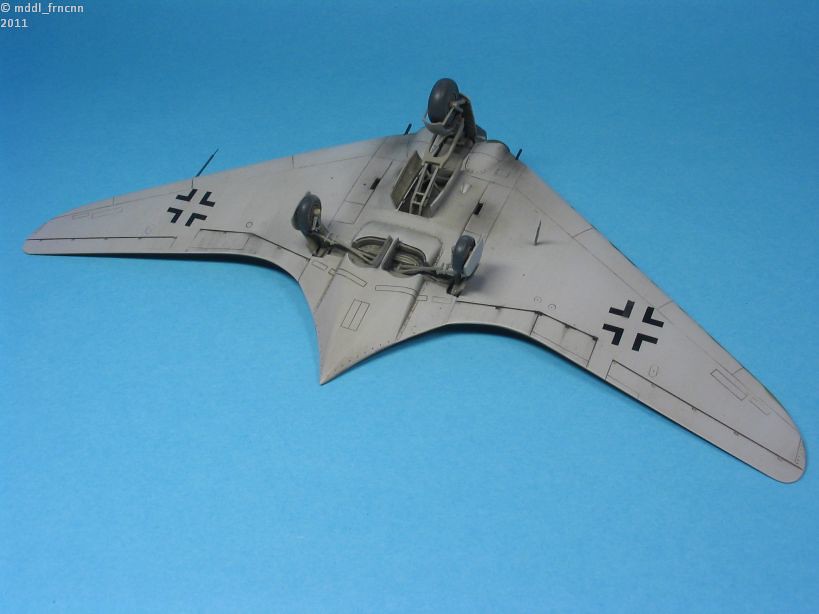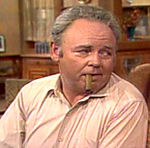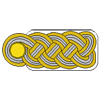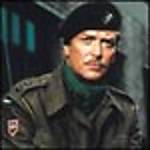-------Horten Go 229 Blitzbau Part Six: Resumé------- @ Russell: thanks! That was a quick reply by the way...
Resumé: Some thoughts about this Blitzbau...

Although we did not make it in time it was GREAT fun!!!

Some techniques which had been applied due to time pressure proved to be very helpful also for "normal" builds to me:
Using cyanoacrylate glue together with a "kicking" solvent:
This is a technique which I have learned from Rebilda. He trusts the Zap-A-Gap kicker in use with the respective glue.
(please look also at his step-by-step building blog of Revells 1:48 F-15 E:) With the kicker, the glue cures imediately. So you can parts together very fast. Furthermore, puttying small seams and holes can be done very fast with superglue and kicker.
Using a sharp pencil to create panel lines:This avoids the often tedious rescribing...
 Using mircromesh cloths to get rid of imperfections in the paint coat
Using mircromesh cloths to get rid of imperfections in the paint coat :
I used them first time. Due to the fine grid you does not scratch the surface and damage the paint. Just the raw top layer of the paint coat coat is removed and you get a smooth finish. In my case the finish was so good that I even could do without applying a clear cote before decaling.
Using Tamiya Fine Surface Primer straight from the rattle can:
Dries fast and hard (approx. 20 min.) and gives you an absolutely smooth finish (also a tip from Rebilda, many thanks my friend!!). In my case, I even used this color as RLM 76.
Using a black broad permant marker for checking the seams: Another precious tip from Rebilda. He makes a short sweep with the marker on the area which has the seam (e.g. trailing edge of the wing). This makes it easier to discover any imperfections. After applying some superglue and kicker and sanding the marker must have been gone. So you have a seamless trailing edge.
Using UHU-tack for mottling or creating soft demarcation lines: An often posted tip, but very efficient method. See the photos in the blog above.
Estimating the time when the paint coat is dry: Depends on your own experience with the color system you use. For me (using Gunze acrylic paint thinned with isopropanol and Revell Aqua Color with its special thinner), I could go on with masking and applying the next coats of paint withing a short period of time (approx. 20 min.). You have to try this yourself to get a feeling what it is possible or not. Of course, mat colors dry much faster than high gloss colors.
Make an effort and kick your AMS over-detailing attitude (that was hard for me...): - Areas which are not visible do not need sanding, further detailling and painting! In my case: the guns. They hide behind a cover which I decided to close
- Areas which are barely visible: it is the same with that. Why putting much effort into a small 1:72 cockpit when it will be covered with the canopy anyway? The main aim in my eyes is a create a good overall looking model. The cockpit interiorīs addition is only small in this case.
Of course this depends on the model and everybody has to decide on its own how much he details his model. For me, I look from the speed build point of view on that subject.
Hope you find some hint useful. Questions and comments welcome!
Servus,
Sebastian
 ,
,
